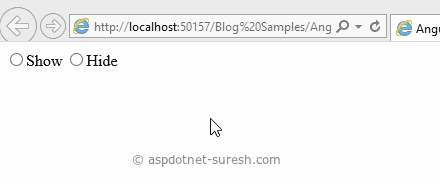

In my opinion, this adds complexity for little or no benefit. Both setTimeout and tTimeout refer to the same function, the only difference being that in the second statement we are referencing the setTimeout method as a property of the window object.
Typescript function to showhide code#
Well, when running code in the browser, scope would refer to the global window object. You’ll notice that the syntax above uses tTimeout. Note: the square brackets denote optional parameters. , argN are additional arguments passed to the function specified by function.

Function signature includes the following. Step 1 − Declare multiple functions with the same name but different function signature. To overload a function in TypeScript, you need to follow the steps given below − TypeScript provides support for function overloading. This mechanism is termed as Function Overloading. In other words, a program can have multiple methods with the same name with different implementation. The following example shows these two Syntactic variations.įunctions have the capability to operate differently on the basis of the input provided to them. Optional braces for a single statement, Empty parentheses for no parameter Optional parentheses for a single parameter On compiling, it will generate the following JavaScript code − Let us take a look at the following code snippet − In such a case the data type of the parameter is any. It is not mandatory to specify the data type of a parameter. Syntactic Variations Parameter type Inference The output of the above program is as follows − On compiling, it will generate following JavaScript code − The function’s reference is returned and stored in the variable foo. This syntax is used when the function body spans multiple lines. Lambda statement is an anonymous function declaration that points to a block of code. The syntax to declare a function with optional parameter is as given below −įunction function_name (param1, param2, param3)įunction disp_details(id:number,name:string,mail_id?:string) The optional parameter should be set as the last argument in a function. A parameter can be marked optional by appending a question mark to its name. Optional parameters can be used when arguments need not be compulsorily passed for a function’s execution. Parameters are a mechanism to pass values to functions.

Sr.NoĪ function definition specifies what and how a specific task would be done.Ī function must be called so as to execute it.įunctions may also return value along with control, back to the caller. A function definition provides the actual body of the function. Moreover, functions make it easy to read and maintain the program’s code.Ī function declaration tells the compiler about a function's name, return type, and parameters. Once defined, functions may be called to access code.

Functions organize the program into logical blocks of code. A function is a set of statements to perform a specific task. Functions are the building blocks of readable, maintainable, and reusable code.


 0 kommentar(er)
0 kommentar(er)
